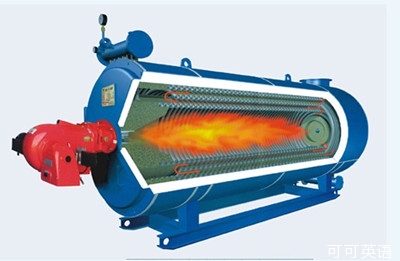Science and technology
科學技術
Channelling heat
導熱
Good conduct
優質傳導
It may soon be possible to control heat flows with great precision
可能很快人們就有可能如臂使指地控制熱量流動了
HEAT, as every schoolboy knows, moves in three ways:conduction, convection and radiation.
每個學生都知道,傳熱方式有三種:傳導、對流和輻射。
Convection is the mass movement of a fluid: hot water rising, for example.
對流是一種流體的大規模活動。比方說水加熱溫度上升,
Radiation is simply infra-red light.
紅外線簡單來說就是輻射。
Engineers know how to control both of these reasonably well.
工程人員對如何控制這兩種傳熱方式相當了解。
 Conduction, however, is most similar to the transmission of sound.
Conduction, however, is most similar to the transmission of sound.
然而傳導從原理上講與聲音傳送最為相似。
It is caused, in other words, by atoms vibrating and passing such vibrations on to their neighbours.
也就是說,傳導是由原子振動和原子傳導這種振動活動將熱量傳遞到臨近物質。
Until now, controlling the conduction of heat through solid objects has been a tricky engineering challenge.
直到現在,如何控制固體物質間的熱傳導仍然是一個棘手的工程難題。
But, by making the analogy with sound explicit, Martin Maldovan, an engineer at the Massachusetts Institute of Technology, thinks he may have found a way of doing so.
但通過對聲學公式的類此推導。麻省理工學院的工程師,馬丁.馬爾多文認為他可能找到控制熱傳導的方法。
Dr Maldovan's invention, published in Physical Review Letters, is based on the idea of a sonic filter.
《物理評論快報》上發表了馬爾多文的研究文章。他從一種音速過濾器上受到啟發。
A good way to filter sound—to eliminate certain frequencies while allowing others through—is to transmit the sound waves through a crystal.
過濾器聲波的好辦法之一是利用水晶體傳遞聲波—能在聲波通過時降低特度頻率并允許其它頻率的聲波通過。
The size of the gaps between the crystal's atoms will govern which frequencies can pass.
水晶原子之間的空隙面積能決定了那種頻率的聲波可以通過。
Moreover, the path the sound takes can be controlled by introducing deliberate flaws into the crystal's atomic lattice. These flaws act as waveguides, channelling the sound energy along themselves.
此外,在水晶格中的特定裂紋可以控制聲波傳送的路徑。這些裂縫工作原理如電波導,使聲波在空隙中。
One difference between sound and heat is that most sound waves have low frequencies, vibrating only a few thousand times a second, whereas most heatwaves have high frequencies, vibrating trillions of times a second.
聲與熱的區別之一是一大部分的聲波頻率較低,一秒鐘振動次數僅為幾千次,而大部分熱波頻率很高,一秒鐘振動次數可達幾萬億次。
In general, low frequencies propagate farther than high ones.
在原理上講,低頻率比高頻率振動傳播要遠。
This is why previous researchers had a difficult time trying to send heat through crystal lattices.
這就是為什么以前的研究在嘗試將熱能傳過水晶格時會遇到困難。
Dr Maldovan, however, realised that although most heat is high-frequency, some has frequencies that approach those of sound.
然而,馬爾多文意識到盡管大部分熱波頻率振動很高,但仍有一些熱波振動頻率與聲波振動頻率相近。
He theorised that if the highest-frequency waves were stripped away, it might be possible to control the remainder.
他提出起一種理論:如果把最高頻率的熱波剝離開后,那么控制剩下低頻熱波就是有可能的。
To test this idea, he grew crystals of silicon that contained tiny particles of germanium in their lattices.
為了驗證他的這一理論,馬爾多文配制了晶格中含有極小微粒鍺的硅晶體。
The layouts of these crystals scattered and blocked high-frequency heatwaves but allowed low-frequency waves through.
硅晶的布局分散,在阻隔高頻率熱波的同時允許低頻率波通過。
These remaining waves had frequencies in a range of 100 billion to 300 billion vibrations a second.
這些留下的熱波頻率在一秒一千億到三千億振動幅度之間。
They were still heatwaves and carried warmth, but because their frequencies were lower they behaved much more like sound.
他們仍為熱波且含有熱量,但他們頻率低至與聲波大致相同。
And Dr Maldovan could control the heat's path in waveguides as tightly as that of sound waves.
這使得馬爾多文能在電波導上控制熱波傳遞路徑,就像控制聲波傳導那樣精確。
Though turning these crystals into practical products will require further tinkering, Dr Maldovan thinks they will be immediately useful in the construction of thermoelectric materials, which transform waste heat into electricity, and will ultimately lead to the thermal equivalent of diodes, allowing heat circuits analogous to electrical ones to be built.
盡管把這些硅晶體轉換為實際產品仍需要進一步研究,但馬爾多文認為在熱電站建筑材料上,這些硅晶體肯定能立即顯示出作用。它能將廢熱轉換為電力,進而最終形成熱當量二極管,使像電循環那樣形成熱循環。
Where that would lead, no one knows. But it is worth bearing in mind that it was the ability to control convective heat, via the steam engine, which powered the industrial revolution. Controlling conductive heat might have equally unforeseen consequences.
這一技術會演化成什么,還無人知曉,但值得我們思考的是,通過引發工業革命的蒸汽汽輪機可以控制對流熱。同樣,控制傳導熱能或許會為我們帶來無法預見的結果。











